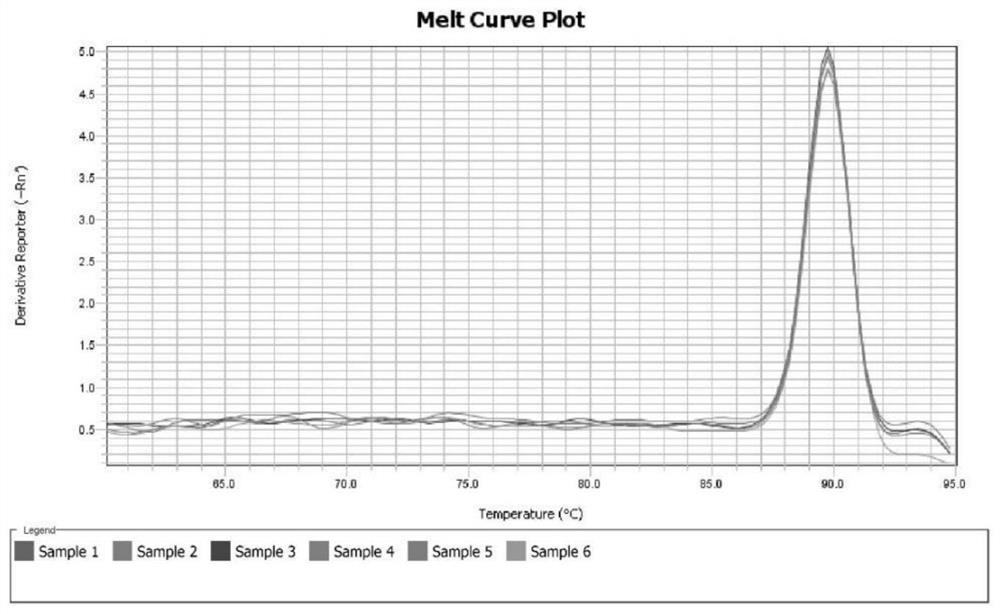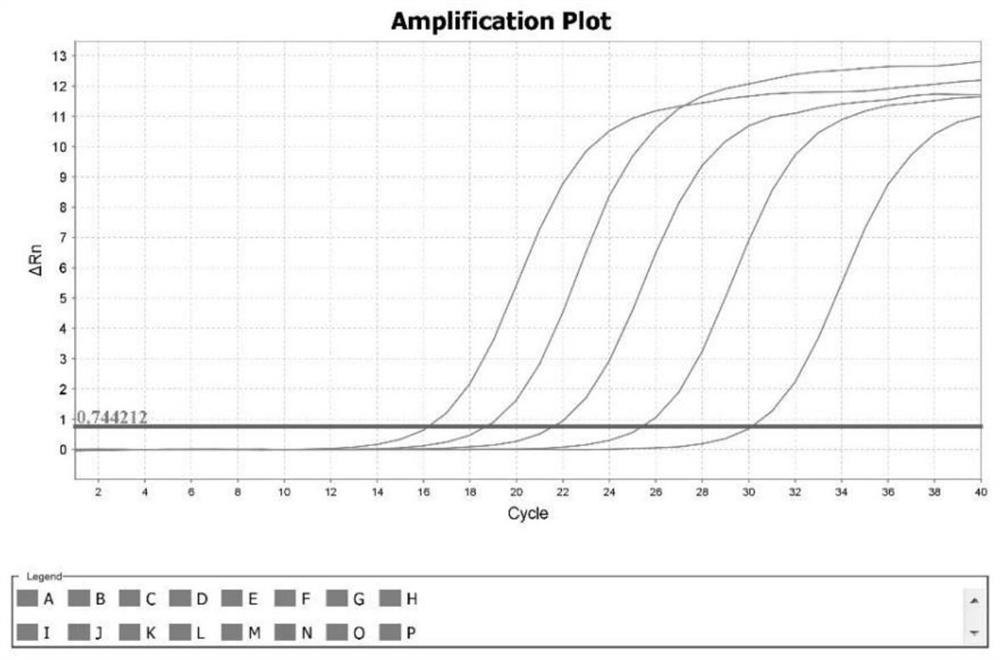Aminoglycoside antibiotic resistance gene detection primer and kit
An aminoglycoside, antibiotic resistance technology, applied in biochemical equipment and methods, microbial determination/inspection, DNA/RNA fragments, etc. and other problems, to achieve the effect of large detection throughput, ensure accuracy, and achieve rapid detection
- Summary
- Abstract
- Description
- Claims
- Application Information
AI Technical Summary
Problems solved by technology
Method used
Image
Examples
Embodiment 1
[0086] This embodiment provides high-throughput quantitative detection primers for aminoglycoside antibiotic resistance genes. The high-throughput quantitative detection primer pairs for aminoglycoside antibiotic resistance genes are artificially synthesized, consisting of 35 aminoglycoside antibiotic resistance genes. The primer pair and 16S rRNA gene standard sequence composition are as follows:
[0087]
[0088]
[0089] The 16S rRNA gene standard product sequence is as follows:
[0090]GCCCGTGACCTCGTCGTATTGACTGCATCGCGTGTCGCCCTTGATCCTAAACATAACCACTAACTGCAATATCTTATTATCATCATGTTCCACAGCTCCTCAGGCTTTATTCATGTCCATTCTTCATCAAATTCGTCATTTTTCACCAAAATGCATTGTGATAAACGATTATCACTTAAGATAATCGATTGTCTTAGTGAAATTTAACCAGAAACATCATGCAGGATGTGATAATTGAATATCAACCCAGATAATCAATTATTCCTAAAACCATTTTCAAAACCTACATGCAACTAATCAAAGGGCGACACGCGATTGCAGCGAGCCTCAGACACTGGCCGTCGTTTTACACAATCAAGTCGTGACTGGGAAAACCCTGGCGCTCACTGGCTCACCTTCACGGGTGGGCCTTTCTTCGGTAGAAAATCAAAGGATCTTCTTGAGATCCTTTTTTTCTGCGCGTAATCTGCTGCTTGCAAACAAAAAAACCA...
Embodiment 2
[0092] Based on the primer pair obtained in Example 1, this example provides a kit, including the following:
[0093] A high-throughput quantitative detection kit for aminoglycoside antibiotic resistance genes in the environment, including specific primers for 35 pairs of aminoglycoside antibiotic resistance genes and internal reference 16S rRNA genes, qPCR reaction reagents, smartchip chips, and wafergen consumables.
[0094] Wherein, the wafergen consumables include 384 deep-well plates, qPCR membranes, chip temporary sealing membranes, chip filter membranes and chip qPCR membranes.
[0095] The qPCR reaction reagents include 2×LightCycler 480SYBR Green IMaster, ROX, Oligo (F+R), 5 different serially diluted DNA standard plasmids and NF H 2 0.
Embodiment 3
[0097] A high-throughput quantitative detection method for aminoglycoside antibiotic resistance genes in the environment, specifically comprising the following steps:
[0098] 1: Standard curve drawing
[0099] 16S rRNA positive control substance construction
[0100] The first step: use 16S rRNA-specific primers to screen a large number of environmental samples, the screening is to amplify the environmental samples by qPCR, and the type of environmental samples is nucleic acid samples;
[0101] Step 2: Observe the amplification curve and melting curve of qPCR, the melting curve has a single peak, and the CT value of the amplification curve is less than 25, and determine that the sample of this reaction is a candidate sample corresponding to the specific primer;
[0102] Step 3: use 16S rRNA-specific primers to PCR amplify the corresponding candidate samples;
[0103] Step 4: The PCR product is subjected to agarose electrophoresis, gel cutting and recovery, and first-generat...
PUM
 Login to View More
Login to View More Abstract
Description
Claims
Application Information
 Login to View More
Login to View More - R&D
- Intellectual Property
- Life Sciences
- Materials
- Tech Scout
- Unparalleled Data Quality
- Higher Quality Content
- 60% Fewer Hallucinations
Browse by: Latest US Patents, China's latest patents, Technical Efficacy Thesaurus, Application Domain, Technology Topic, Popular Technical Reports.
© 2025 PatSnap. All rights reserved.Legal|Privacy policy|Modern Slavery Act Transparency Statement|Sitemap|About US| Contact US: help@patsnap.com



